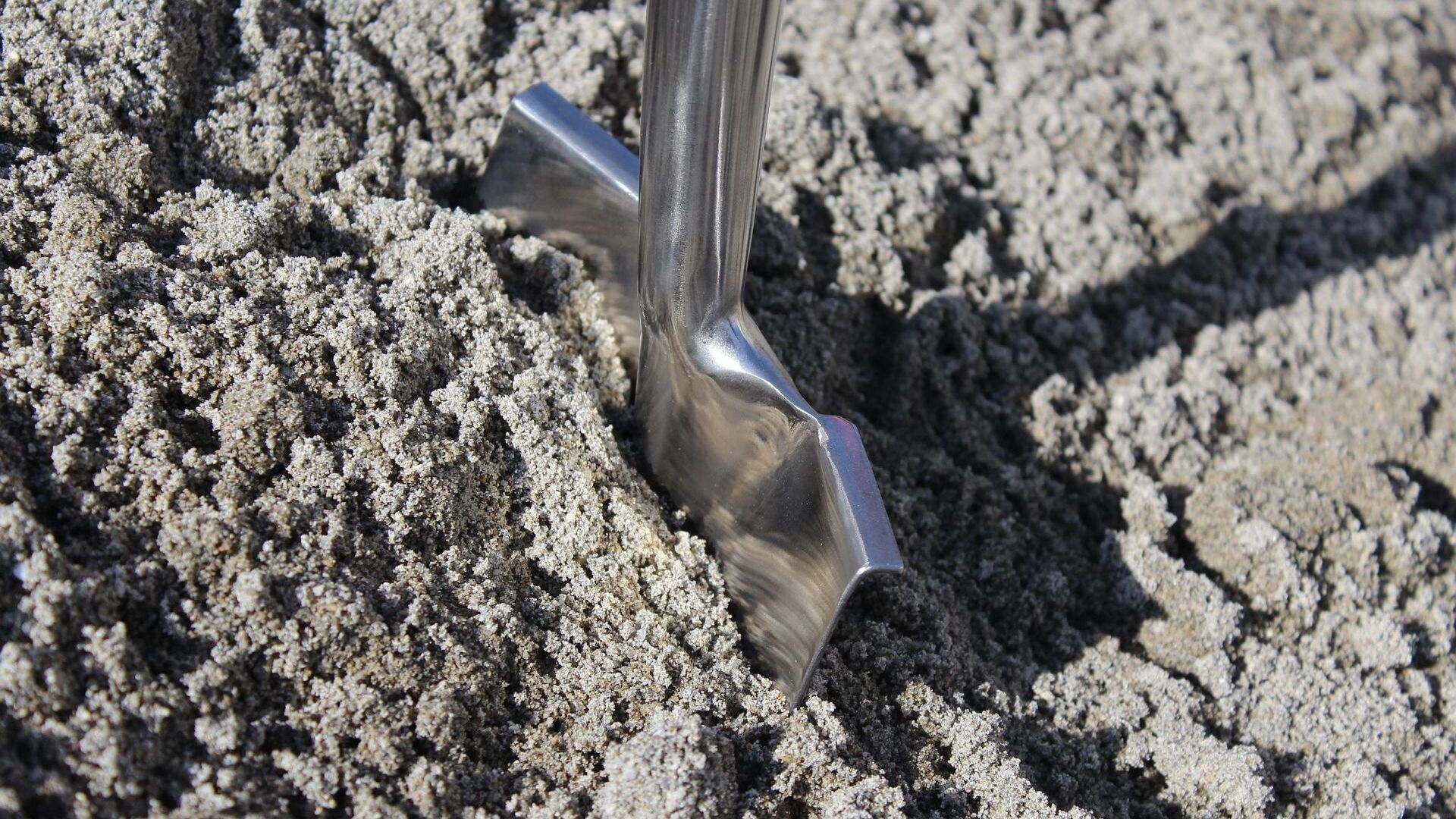https://sputnikglobe.com/20211004/danish-amateur-metal-detectorists-find-insane-1000-year-old-silver-treasure-1089638167.html
Danish Amateur Metal Detectorists Find 'Insane' 1,000-Year-Old Silver Treasure
Danish Amateur Metal Detectorists Find 'Insane' 1,000-Year-Old Silver Treasure
Sputnik International
Some of the numerous coins found on the island of Zealand were minted by Svend Estridsen, an English-born king of Denmark known for his courage on the... 04.10.2021, Sputnik International
2021-10-04T05:51+0000
2021-10-04T05:51+0000
2022-11-03T19:26+0000
denmark
newsfeed
europe
scandinavia
vikings
https://cdn1.img.sputnikglobe.com/img/07e4/0a/0c/1080743594_0:151:1921:1231_1920x0_80_0_0_68b0f1c062b31737dc679e2416a9a660.jpg
A day in the field turned magical for two Danish metal detector enthusiasts who found a large silver trove put into the ground some 1,000 years ago outside Ruds Vedby in the middle of the island of Zealand.Over 600 coins appeared from the ground in the field, togther with the remains of the urn in which the coins had been hidden. In addition, special buckles called fibulas and numerous engraving tools were found in the area, TV2 reported.The coins were buried at some point between the 11th and the 12th century, and they date from the period when the Viking Age turned into the Middle Ages. The find contains both Danish, English, and German coins. Most appear to have not been used much, but rather kept as a treasure. Many of the coins were minted by Svend Estridsen, an English-born king of Denmark known for his military prowess and dozens of children fathered out of wedlock, and Knud the Great or Canute, referred to as the most effective king in Viking and Anglo-Saxon history, uniting his possessions into the so-called Northern Sea Empire.Kirsten Christensen, a museum inspector at Museum West Zealand, called it a rare find, stressing that while 30 silver finds from the Svend Estriden period are known in Denmark, only one of them stemmed from this particular area. She also emphasised that the coins are in mint condition. An exhibition with the treasure has been arranged at the Sorø Museum.Afterwards, the treasure will be assessed by experts at the National Museum.His partner Per Carlsen said that their initial thought was that the coins were used for role-playing games.Jimmy Christensen mused whether the treasure is somehow related to Tissø, referring to the large presumed royal estate and trading post at Tissø, where traces of Denmark's few remaining pagan temples were also found.During the Viking Age (793-1066), Scandinavian seafarers known as Vikings undertook wide-ranging raids, conquests, and trading missions throughout Europe. Among other things, they settled in Iceland, Ireland, the British Isles, in parts of the Mediterranean region, and even reached North America.
denmark
scandinavia
Sputnik International
feedback@sputniknews.com
+74956456601
MIA „Rossiya Segodnya“
2021
News
en_EN
Sputnik International
feedback@sputniknews.com
+74956456601
MIA „Rossiya Segodnya“
Sputnik International
feedback@sputniknews.com
+74956456601
MIA „Rossiya Segodnya“
denmark, newsfeed, europe, scandinavia, vikings
denmark, newsfeed, europe, scandinavia, vikings
Danish Amateur Metal Detectorists Find 'Insane' 1,000-Year-Old Silver Treasure
05:51 GMT 04.10.2021 (Updated: 19:26 GMT 03.11.2022) Some of the numerous coins found on the island of Zealand were minted by Svend Estridsen, an English-born king of Denmark known for his courage on the battlefield and dozens of children he fathered out of wedlock, and Knud the Great or Canute, who ruled over what is referred to as the Northern Sea Empire.
A day in the field turned magical for two Danish metal detector enthusiasts who found a large silver trove put into the ground some 1,000 years ago outside Ruds Vedby in the middle of the island of Zealand.
Over 600 coins appeared from the ground in the field, togther with the remains of the urn in which the coins had been hidden. In addition, special buckles called fibulas and numerous engraving tools were found in the area, TV2
reported.
The coins were buried at some point between the 11th and the 12th century, and they date from the period when the Viking Age turned into the Middle Ages. The find contains both Danish, English, and German coins. Most appear to have not been used much, but rather kept as a treasure. Many of the coins were minted by Svend Estridsen, an English-born king of Denmark known for his military prowess and dozens of children fathered out of wedlock, and Knud the Great or Canute, referred to as the most effective king in Viking and Anglo-Saxon history, uniting his possessions into the so-called Northern Sea Empire.
Kirsten Christensen, a museum inspector at Museum West Zealand, called it a rare find, stressing that while 30 silver finds from the Svend Estriden period are known in Denmark, only one of them stemmed from this particular area. She also emphasised that the coins are in mint condition. An exhibition with the treasure has been arranged at the Sorø Museum.
"It is such a beautiful find that it must be shown – and the finders deserve their pat on the shoulder", Kirsten Christensen said.
Afterwards, the treasure will be assessed by experts at the National Museum.
"So, it was completely insane. My body responded to the tension and I think I have never sweated so much before. Wherever we looked, there were coins. When we received a visit from the museum, there were so many coins that they were stuck in the mud on the rubber boots. It was completely wild", said amateur metal detectorist Jimmy Christensen, who has been using a metal detector for just a couple of years.
His partner Per Carlsen said that their initial thought was that the coins were used for role-playing games.
Jimmy Christensen mused whether the treasure is somehow related to Tissø, referring to the large presumed royal estate and trading post at Tissø, where traces of Denmark's few remaining pagan temples were also found.
During the Viking Age (793-1066), Scandinavian seafarers known as Vikings undertook wide-ranging raids, conquests, and trading missions throughout Europe. Among other things, they settled in Iceland, Ireland, the British Isles, in parts of the Mediterranean region, and even reached North America.

